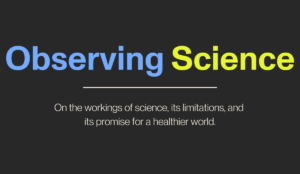Written in Stigma
Stigmatizing language in medical notes may reveal negative attitudes and implicit biases of physicians.

Read Time: 3 minutes
Published:
I informed her that this is unlikely to be helped by antibiotics and talked about smoking cessation with her. She said she will ask her ‘sinus doctor’ for antibiotics. These sentences are from a clinician’s medical note following a patient encounter. The note is one of 600 medical notes that Jenny Park and colleagues analyzed in an urban ambulatory internal medicine clinic looking for stigmatizing language.
The research team analyzed physician notes for recurring themes. The themes were then categorized as either positive or negative sentiments doctors recorded about their patients. Five negative language categories emerged: questioning patient credibility (“supposedly,” “claims,” or “insists” ), disapproval ( “He is well aware of increased risk of seizure and is willing ‘to take the risk.’”), racial or social class stereotyping (writing that a patient reported their bandage got “a lil’ wet”), unilateral decision making (“I have instructed her . . .”) and difficult patient (“the patient was adamant. . .” ). In the example above, putting quotes around a patient’s reference to a sinus doctor may reveal a physician’s condescending disapproval of the patient’s decisions.
Stigmatizing language in medical notes may reveal negative attitudes and implicit biases of physicians. Implicit biases reinforce stereotypes, which can affect treatment decisions and the quality of patient care. Clinicians’ negative feelings may uphold the “self-fulfilling prophecy,” where perceptions of patient behavior confirm stereotypes. Negative sentiments written into medical records can also influence the attitudes of other clinicians. When bias is repeatedly recorded in notes, patients can enter a cycle of continuous disenfranchisement.
Words affect beliefs and actions. A national study by Glassberg et al. found that emergency medicine physicians who referred to patients with sickle cell disease as “sicklers” were more likely to have negative attitudes towards these patients and were less likely to follow national guidelines for pain management and prescribing medication. Another study by Kelly et al. found that physicians who read a vignette calling people who use drugs “substance abusers” were more likely to believe that persons who use drugs were personally responsible for their illness and should face punitive measures.
How doctors communicate about their patients can dictate how they act toward those patients.
The research team also found positive language in medical notes, such as using compliments (“Mrs. [Patient] is a delightful female”), showing approval (“I provided much deserved praise and encouraged her to continue her trajectory”), minimizing patient blame (“She has not been taking iron because it makes her constipated”), sharing feelings of respect towards patients (“I am also encouraged by his new spirit to improve his health”), and demonstrating collaborative decision making between patient and physician (“He does not want to add a medication so I will increase the dose”). Positive doctor-patient relationships may improve adherence to care recommendations and patient satisfaction with care.
Paradoxically, positive language can also mask covert racism. Compliments towards patients of color may reflect physicians having lower expectations for those patients.
How doctors communicate about their patients can dictate how they act toward those patients. Biases in provider notes may partially explain inequities in quality and access to health care. Nearly all health centers use electronic health records that make notes readily available to all health care clinicians within a health system. Clinicians must be aware of their language as one way to ensure that a patient’s care isn’t compromised because of implicit biases. Words can hurt, but in healthcare, they may harm.
Photo via Getty Images



